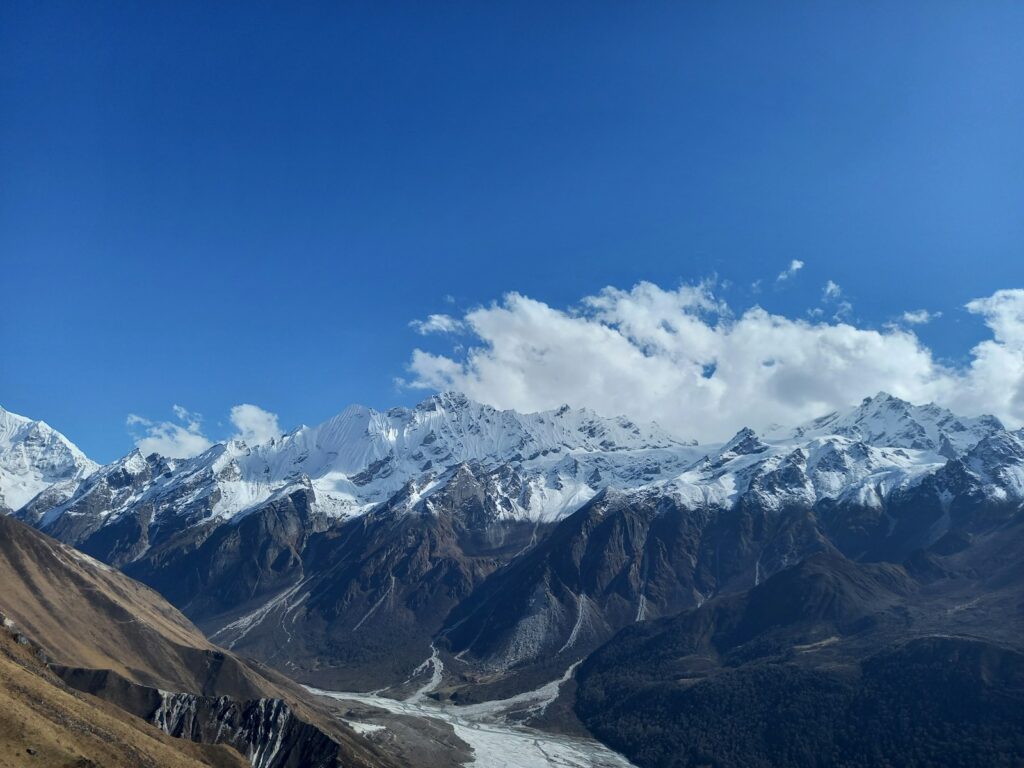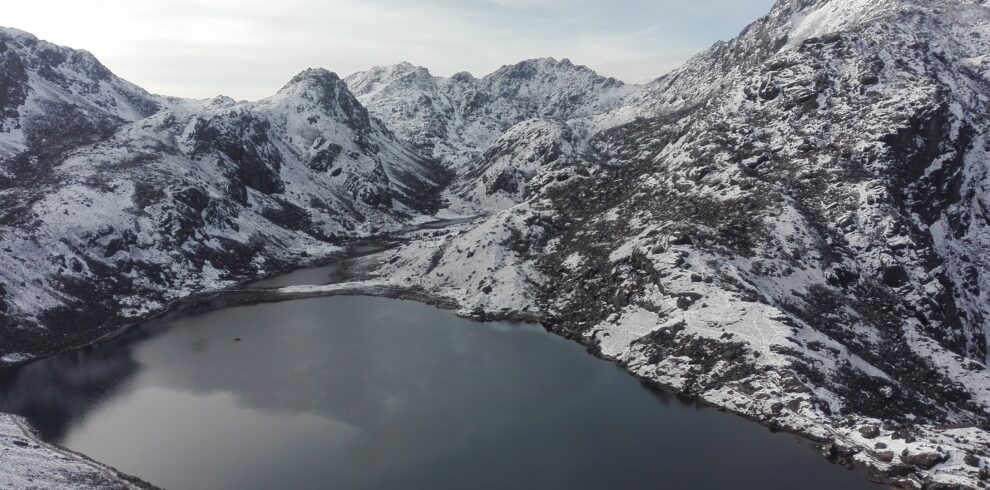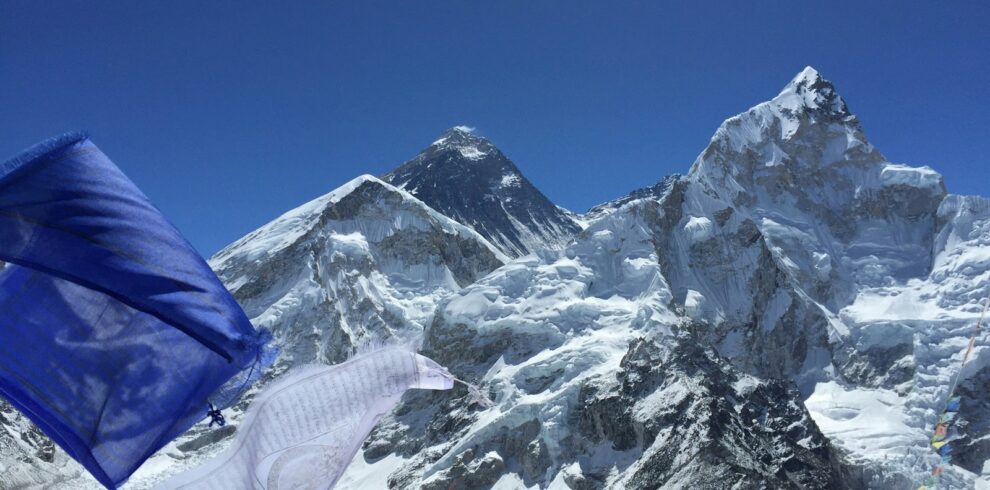Trip Info
-
Nepal
-
Annapurna Region
-
Trekking
-
16 Days
-
Year Round
-
Moderate
-
4250 Meters
-
2 - 32 People
-
30 Days Before Start
Overview
The Upper Mustang trek winds its way to the hidden Buddhist world of the Kingdom of Mustang, also known as Lo. This remote trans-Himalayan mountain area borders Tibet and has a distinct Tibetan feel to it, both in its people and culture and in its arid landscape of high cliffs and rocks of unusual formations and colour.
The trek visits Kagbeni, the gateway to Upper Mustang, then on through a stark landscape in the rain shadow of the Dhaulagiri massif to Lo-Manthang, the seat of past Kings of the Kingdom of Lo.
Explore caves, rock paintings, monasteries, and gompa and learn something about the culture of this area. Panoramic views of Nilgiri, Annapurna, Dhaulagiri, and others, are very much part of this exciting trip!
Within Lo Manthang itself a visit to Namgyal Gompa and Tingkhar, the last main village in the northwest of the area, as well as the King’s palace, brings a further cultural understanding of the area.
Trip Highlights
- Walk back to the history of Lo Manthang after exploring the palace of king
- Walk freely without worrying about the rain as the region lies in the rain shadow area
- Spiritual feel walking through many Gompas, chortens, flapping prayer flags, and caves
- Catch a live glimpse of Tibetan influence on the everyday activities and culture of the locals
- Enticing views of Nilgiri, Annapurna, Dhaulagiri, and other chains of mountains
- Breathe the spirituality of the Tibetan like people and monks with their prayer flags
Itinerary
Our represent will receive you from the Kathmandu airport. Please look for your namecard. After formal meeting, you will drive to the Hotel.
After breakfast, begin a scenic drive from Kathmandu to Pokhara, a beautiful lakeside city nestled beneath the Annapurna range. The journey takes around 6–7 hours, passing through lush hills, river valleys, and charming rural landscapes. Upon arrival, enjoy a relaxing evening by Phewa Lake with stunning views of the surrounding mountains.
Early morning 15-min drive then 20 min scenic flight above Kali Gandaki valley to Jomsom airport. From Jomsom 4-5 hours trek to Kagbeni via alternative trekking trail (No Jeep track).
Today have to walk on jeep road all the way to Chele, visit beautiful monastery near to Chhusang on the lunch break then short trek to Chele.
We following trekking trail and skip jeep road and keep climbing to Samar village via Ghyakar. After lunch lunch in Samar short climb-up on pasture dwarf vegetation then walking down on small trail to Chundsi cave also known as Milrepa’s cave, from here gentle ascent up to Syanboche village.
We follow trekking trail via Ghiling village and enjoy to see breathtaking moubtain view of thorong peak, Tilicho Peak and Nilgiri mountain. After lunch at Ghiling follow tiny trail to Ghami.
This route to skip the jeep track, from Ghami an hours trek to Dhakmar and enjoy to see colorful red cliff and several flamboyant Chhorten. Then climbing up to small ridge which offers amazing Mountain View and the wide landscapes of the plateau. Trek continues to Ghar Gompa and take a picture of red tomb, after visiting old Buddhist monastery around 2 hours trekking down to Tsarang village.
Morning explore Tsarang village then uphill trekking on the farmland and pasture to Chogo La. Chogo La offer beautiful scenery of the mountains and landscapes. From the Chogo la pass descending to Lomanthang.
Today visit to Chhoser village and explore 5-storey John cave, Nifu Cave and Gharfu cave, Namgyal Gomba then retrace to Lomanthang village.
It is complete day trips from Lomanthang and it possible takes 7-8 hours should travel with pack lunch and sufficient drinking water for full day.
From Lomanthang drive ahead to Chusang via Tsarang, Ghami, Syangboche and end-up at Chusung village. After lunch around 40-min trek to Tetang village.
Leave early morning from lodge, keep ascending to Gyu la pass then gradual descending trek to Muktinath
Today also taking alternative route to get back Jomsom, gentle uphill trek from Muktinath to viewpoint where we can set down on stone rest place then enjoy to see breathtaking view of Dhaulagiri massive. From here strolling down to Luprak village and stop for the lunch. After lunch around 2-3 hours trekking to Jomsom.
20-min scenic flight offers breathtaking mountain view of western Himalayas then upon arrive Pokhara transfer to your hotel.
After a memorable trek, begin the drive back to Kathmandu, retracing your route through scenic hills, terraced fields, and traditional villages. The journey takes approximately 6–8 hours, offering a final glimpse of Nepal’s countryside charm. Once in the capital, you can relax at your hotel or explore the city’s vibrant streets and markets. It’s a perfect time to reflect on your adventure and enjoy a farewell evening in Kathmandu.
Your journey in Nepal comes to an end today. Depending on your flight schedule, you may have some free time for last-minute shopping or sightseeing. A representative will transfer you to Tribhuvan International Airport for your departure. Wishing you a safe journey and hoping to welcome you back to the Himalayas someday!
Includes
Cost Includes
- Three meals a day (Breakfast, Lunch, Dinner) whilst on trekking.
- Cozy guesthouse accommodation whilst on trekking as per the itinerary.
- Domestic flight Pokhara –Jomsom - Pokhara for guest and guide inclusive with all taxes.
- Special Trekking permit fees.
- All necessary government and local permits, National Park entry fees.
- Trekkers Information Management System registration card.
- An experienced fluent English speaking guide, licensed by ministry of Culture, Tourism & Civil Aviation.
- Guide food, accommodation, clothing, salary & insurance.
- All necessary ground transportation as per the itinerary by car and Tourist bus for pokhara.
- Nepal Holiday sleeping bag,down jacket, duffel bag and area trekking map.
- First aid medical kit with Oxymeter to check pulse,heart rate and oxygen saturation at higher altitude.
- Airport transfers during the whole trip as per the itinerary.
- All applicable taxes as per the government rules and regulations.
- Farewell dinner in Kathmandu at typical Nepali restaurant
Cost Excludes
- International Airfare, visa fees and re-entry visa fees if applicable
- Hotel and Meals at Kathmandu...
- Personal nature expenses like bar bills, beverage bills, telephone bills, laundry etc.
- Optional (USD 275) Experienced and equipped trekking porter (one porter carry for 2 guest's luggage,up-to 25 kgs).
- Your Travel Insurance and rescue evacuation, medical costs.
- Services not mentioned in ' The Price Includes' section (Please ask us if you are confused about any services)
- Gratitude (tip) for staffs.
FAQs
Yes, most treks in Nepal require one or more permits. The most common are the TIMS (Trekkers’ Information Management System) card and area-specific permits like the Annapurna Conservation Area Permit (ACAP) or Sagarmatha National Park Permit. Restricted areas such as Upper Mustang or Manaslu require special permits and must be arranged through registered trekking agencies. Carrying the correct permits is essential, as checkpoints are common along trails.
The ideal trekking seasons are spring (March to May) and autumn (September to November). These months offer clear skies, mild temperatures, and breathtaking mountain views. Spring is known for blooming rhododendrons, while autumn offers the best overall weather conditions. Monsoon (June to August) brings heavy rains, and winter (December to February) can be extremely cold and snowy at higher altitudes.
Fitness requirements vary depending on the trek, but a good baseline of cardiovascular health and endurance is helpful. Treks range from easy, low-altitude hikes like Ghorepani Poon Hill, to challenging high-altitude circuits like Everest Base Camp or Manaslu Circuit. Regular walking, stair climbing, or hiking in advance can prepare you well. Mental stamina is equally important, especially on longer or more remote trails.
Yes, altitude sickness, or Acute Mountain Sickness (AMS), can affect anyone above 2,500 meters, regardless of fitness or experience. Common symptoms include headache, nausea, dizziness, and shortness of breath. To reduce the risk, it’s essential to acclimatize properly, ascend gradually, stay hydrated, and avoid alcohol. In serious cases, descending is the only effective treatment, and travel insurance should cover emergency evacuation if needed.
Independent trekking is allowed in many areas like Annapurna, Everest, and Langtang. However, restricted areas such as Upper Mustang, Manaslu, and Dolpo require you to trek with a registered guide and at least two trekkers. Even where not mandatory, many trekkers choose to hire a guide for navigation and cultural insight or a porter to reduce physical strain. Going with a guide also adds a layer of safety and local support.
Most popular treks in Nepal offer teahouse accommodation, which are small lodges run by local families. These lodges typically provide basic rooms with shared bathrooms, local meals like dal bhat, and sometimes limited electricity or Wi-Fi. In more remote or less-developed areas, accommodation may be more rustic or require camping arrangements. It’s advisable to carry a sleeping bag for warmth and hygiene, especially in higher elevations.
Packing smart is key, as you’ll want to balance essentials with minimal weight. Core items include layers of clothing, a warm down jacket, sturdy trekking boots, a sleeping bag, headlamp, and first-aid kit. Don’t forget water purification tablets, snacks, sunscreen, and trekking poles if needed. Depending on the route and altitude, gear requirements may vary, and renting equipment in Kathmandu or Pokhara is also an option.
Yes, travel insurance is strongly recommended for all trekkers in Nepal. Your policy should specifically cover trekking at high altitudes (up to 6,000 meters or more) and include emergency helicopter evacuation. Medical care in remote areas is limited, and evacuation can be very expensive without insurance. It’s also helpful if your insurance covers trip cancellations, lost luggage, and other travel mishaps.
In more developed trekking regions like Everest and Annapurna, some villages have ATMs and paid Wi-Fi, but these services can be unreliable. In remote areas, there may be no access to banks or internet, so it’s best to carry enough cash (Nepali rupees) for your entire trek. Lodges often charge extra for device charging or internet usage. Trekking unplugged can be part of the adventure, so plan accordingly.
Yes, Nepal is generally considered a safe destination for solo female travelers, especially on well-trodden routes. Many women trek alone every year without issues, but taking basic precautions, such as informing someone of your plans and staying in reputable lodges, is wise. Hiring a female guide or joining a group can enhance safety and add cultural depth. Nepalese people are friendly and hospitable, but like anywhere, it’s important to stay aware of your surroundings.









